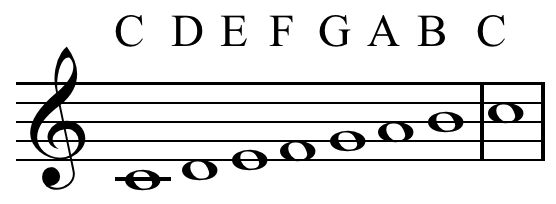The Circle of Fifths also unites music and geometry in a number of ways and we'll investigate one of them here.
How can you construct the proper diatonic scales from each note on the circle?
There are a number of ways. Chords are said to consist of root, third and fifth. But that scheme, although widely used, is not particularly useful. I was classically trained on the double bass and we construct chords in thirds only: root, major third and then another minor third on top of that for a major chord or root, minor third and then a major third on top for a minor chord. Using this method, let’s construct our diatonic scales on the Circle of Fifths using the pattern shown above: root, major 3rd, minor 3rd, major 3rd, minor 3rd, minor 3rd, major 3rd, minor 3rd.
For example, let us use C. Starting at C we go up a major 3rd (or 4 half-steps) to E. Then go up a minor 3rd (or 3 half-steps) to G. Then go up another major 3rd to B. Then another minor 3rd to D. Then another minor 3rd to F. Then a major 3rd to A. Then a minor 3rd to C'. So the order is:
C E G B D F A C'

Basically, you're starting at C and skipping a note to E, skipping another to G, skipping another to B then going back and starting at D and repeating the pattern.
Now arrange these notes starting at C in a circle in alphabetical order: C (C') D E F G A B and draw lines starting from C to each note in the order obtained in the sequence shown above. You get a 7-pointed star! And this works with any key and whether major or minor. Try it!

Pick another key—say Ab. The order we obtain is:
Ab C Eb G Bb Db F Ab'
Now lay them in a circle in alphabetical order and then draw a line from one note to the next in the sequence above—a 7-pointed star!